Contents
Modern breeders have bred gooseberry varieties that do not have thorns on their stems. However, most gardeners prefer to grow traditional varieties of this plant in their garden plots. After all, despite the fact that picking berries from a thorny bush causes certain inconveniences, their benefits cover any discomfort.
However, different varieties of gooseberries are suitable for growing in different regions of Russia, so before planting it is necessary to clarify which variety is planned to be planted.
Gooseberry variety Russian yellow, Malachite and Invicta

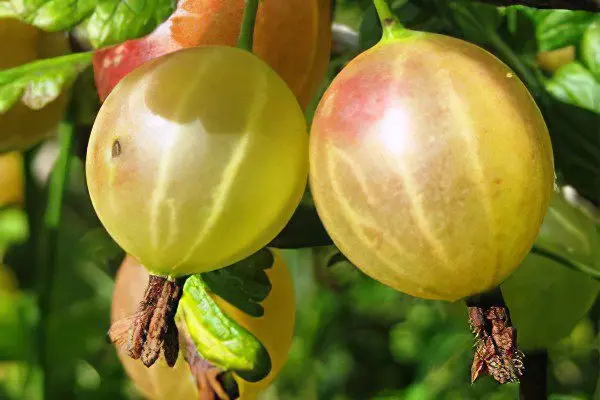
Variety Russian yellow. The crop is represented by large berries that have an amber-yellow color. Their taste is sweetish, with some sourness. Berries are well suited for fresh consumption, however, they can be processed to prepare various desserts from the fruits. The bush is resistant to frost, gives a high yield. This variety is not afraid of such a pest as powdery mildew. The berries remain on the branches for a long time and do not crumble. As for the thorns, there are not very many of them on the bush.
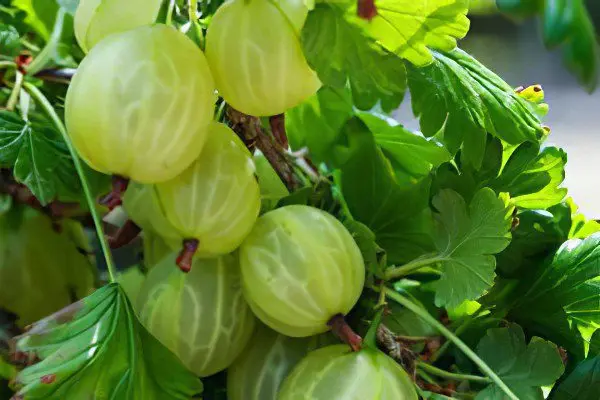

Variety Invicta – This is a hybrid of the Kipsake, Vinhams Industry and Resistant varieties, bred by English breeders. The fruits of this variety are not large, sometimes even smaller than average. Moreover, different-sized berries can be located on one brush. The plant has something in common in its characteristics with the Russian yellow variety. When the berries are fully ripe, they acquire a yellowish-greenish hue. The fruits are sweet in taste, the pulp has a transparent texture. Harvesting can begin in mid-July. The bush bears fruit every year, and the harvest is always plentiful. The berries can be consumed fresh or processed into jam or juice.
Invicta tolerates frost well, the bush itself is very strong and sprawling. On the shoots you can see multiple thorns. The leaves of the shrub are small, have a light green color. The plant is resistant to powdery mildew.

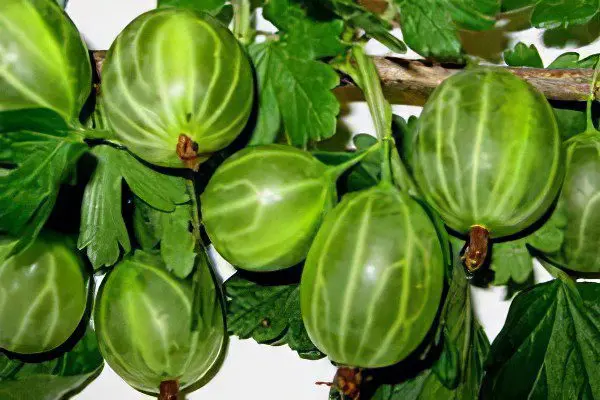
Variety Malachite. A distinctive feature of this variety are bright fruits, rich green color. The berries are very large, have a slight acidity. The pulp of the fruit is transparent, tender and juicy. One berry can reach 6 g.
As for the shrub, it has a small number of thorns and tolerates frost well. The yield per plant is average, fruit ripening is medium late. This variety is resistant to powdery mildew.
Gooseberry varieties suitable for growing in the Moscow region


Jubilee variety. This variety of shrubs ripens in medium terms. The plant is very resistant to frost, so it is great for growing in the suburbs. The gooseberry yields a plentiful harvest. The berries are large, the weight of one fruit reaches an average of 4 g. The color of the berries during the period of full ripening is bright yellow.
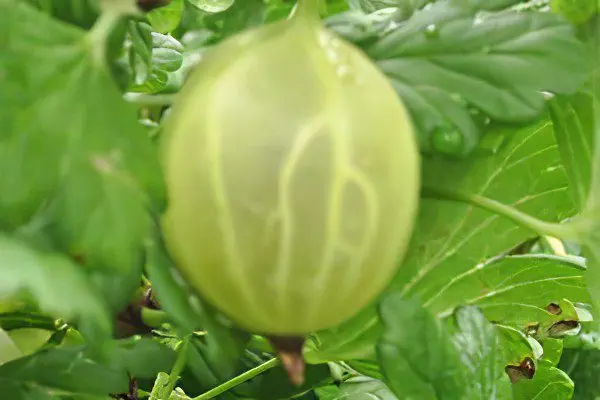
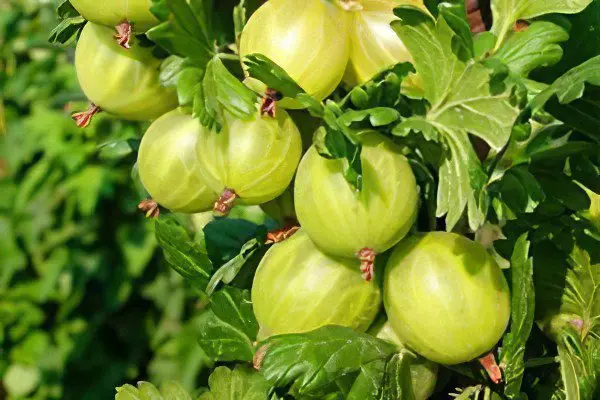
Variety Rodnik. A very good variety of gooseberries, which gives a bountiful harvest, ripening in medium terms. The plant tolerates frost well, but has an average degree of disease resistance.
Bushes do not reach large sizes. The berries on it ripen large and medium, their color is greenish-yellow, with a slight reddish tint. The fruit tastes sweet and tender. There are no thorns at the ends of the shoots. Along the length of the branches, they are located in single short protrusions.
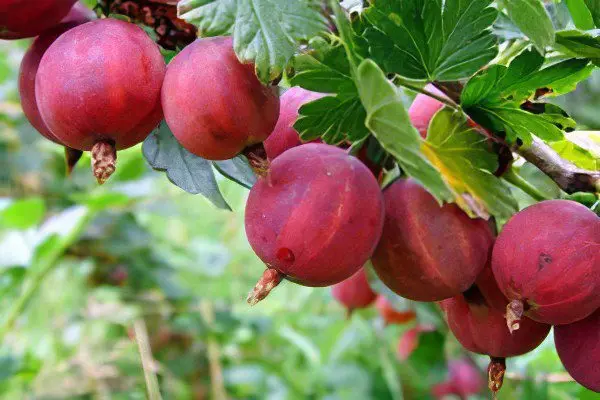

Variety Krasnoslavyansky. This variety has good resistance to frost, ripens in medium terms. Bushes are not susceptible to infection with powdery mildew. From one plant you can collect up to 7 kg of berries. The density and spininess of the shoots is medium. In height, the bush does not reach large sizes, spreads the shoots weakly.
Berries of a gooseberry of a grade Krasnoslavyansky large. The weight of one fruit can reach 9 g. The berries have a dark red color and a dense skin. They taste sweet and juicy.
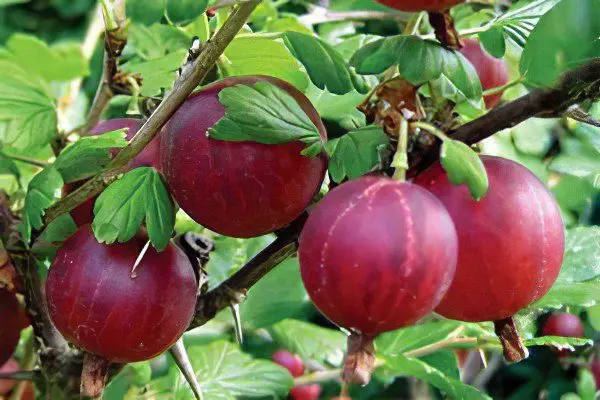
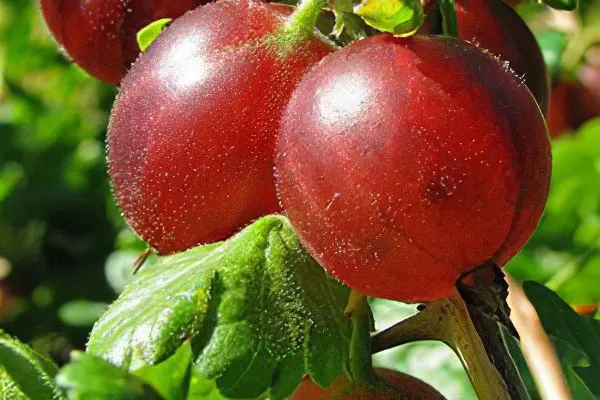
Hinomaki variety. The bush of this gooseberry variety has a rounded shape. The plant does not reach large sizes, is characterized by medium growth. The shoots are arc-shaped, multiple spikes are formed on them, the branches themselves are thin.
The crop can be harvested in early July. The fruits are red in color and have a sweet and sour taste. After ripening, the berries remain on the bushes for a long time, do not burst and do not fall off.
Gooseberries of this variety tolerate frost well and are resistant to powdery mildew. Berries can be consumed fresh, processed and frozen. This variety is very much appreciated by many amateur gardeners.
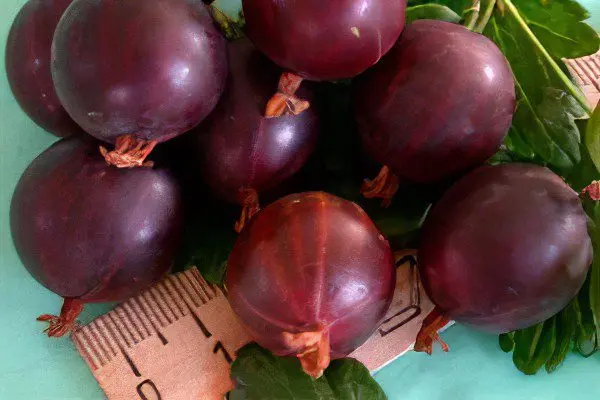
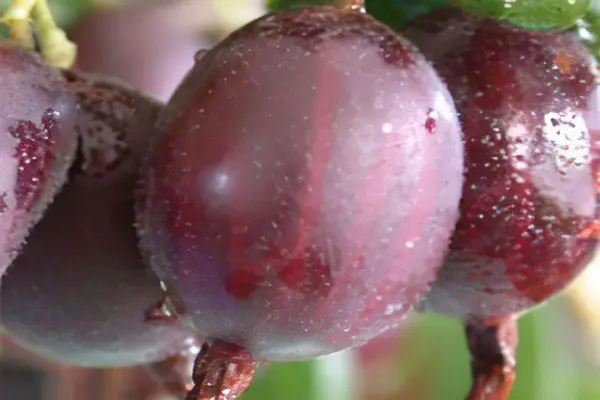
The Nesluhovsky variety. This gooseberry variety was bred by Ukrainian breeders. The fruits ripen early. The berries are sweet, large, dark red. One berry can reach a weight of 6,5 g.
The shrub tolerates frost well, gives a high yield. From one plant you can collect up to 6 kg of fruit. Variety Neslukhovsky is characterized by increased resistance to septoria, but at the same time it can be affected by powdery mildew.
Another advantage of this variety is the long-term storage of berries on branches. After maturation, they do not fall off for a long time, do not wither and do not burst. Moreover, this does not affect the taste of the fruit.
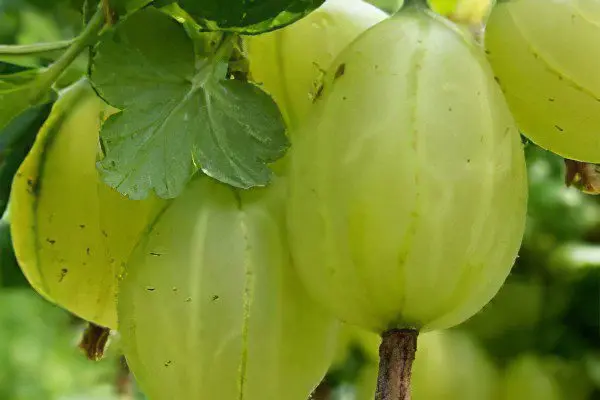

Variety Mucurines. This variety is characterized by increased productivity and good resistance to powdery mildew, as well as to other fungal diseases.
The berries are large, yellow in color and very sweet in taste. They can be consumed both fresh and frozen. This variety is suitable for cultivation in amateur plots, although it lends itself well to mechanized harvesting. Frost resistance of the plant is average.


Roland variety. This gooseberry variety was bred by German breeders. The plant reaches a height of 1,5 meters. Medium sized fruits. The weight of the berries is about 5 g. They taste sweet and sour, with a strong aroma. The shape of the berries is oblong, resembling an oval, the color is matte, dark red.
Gooseberries ripen late, but the yield is high, the berries do not shrink over the years. They can be consumed fresh, or they can be harvested for the winter.
The resistance of the plant to frost is average. Roland’s variety is not afraid of powdery mildew.
The best gooseberry varieties for growing in central Russia

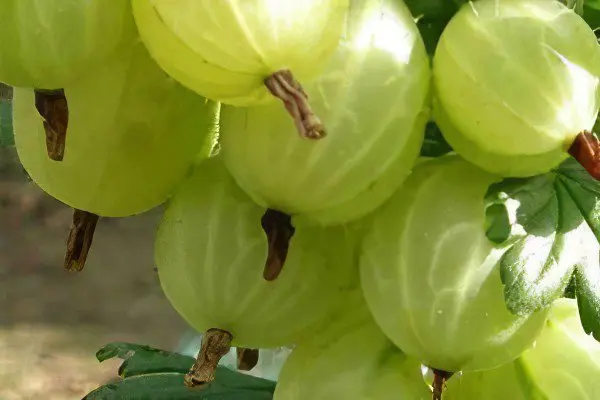
Sort Seedling Mole. This is a new variety of gooseberry, which is characterized by early ripening. The berries are of medium size, the weight of the fruit varies from 4 to 6 g. The taste of the fruit is dessert, the color is yellow-green.
This variety is not afraid of frost, as well as sudden changes in temperature. Fruiting starts early. A distinctive feature of this plant is its high yield. So, from one bush you can collect up to 9 kg of fruit.

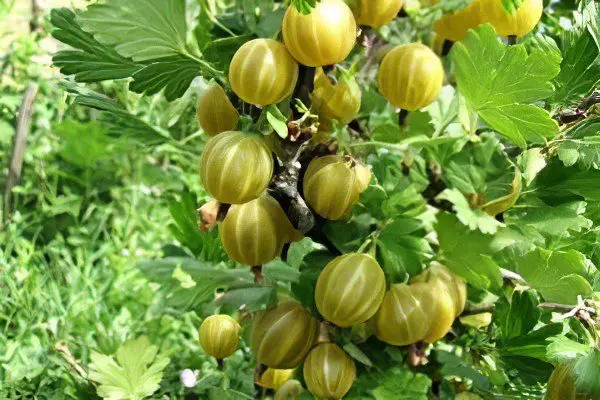
Grade Golden Light. This variety is frost and drought tolerant. The fruits ripen in medium terms. The berries have a rich amber-yellow color and a sweet and sour taste.
The plant is very resistant to various diseases, which brings it on par with the best varieties of gooseberries.
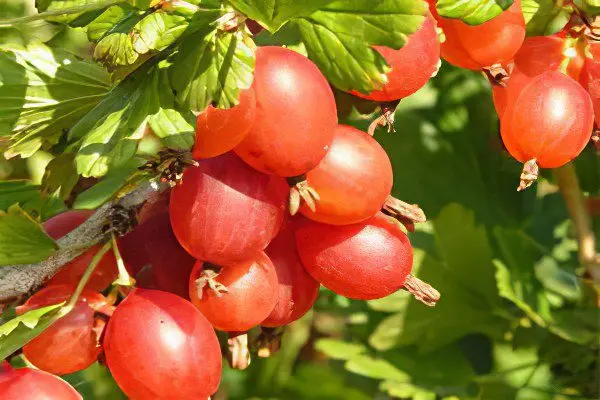
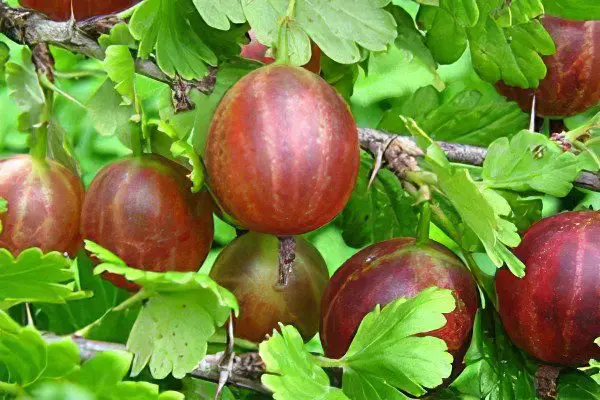
Variety Mashenka. This gooseberry variety was bred by Belarusian breeders. The fruits ripen in medium terms, have a reddish tint and an oval shape. The berries are not large, the average weight is 4 g.
The plant tolerates frost well, gives a high yield. Variety Masha is not afraid of pests and diseases. The bush is small, but strong shoots.

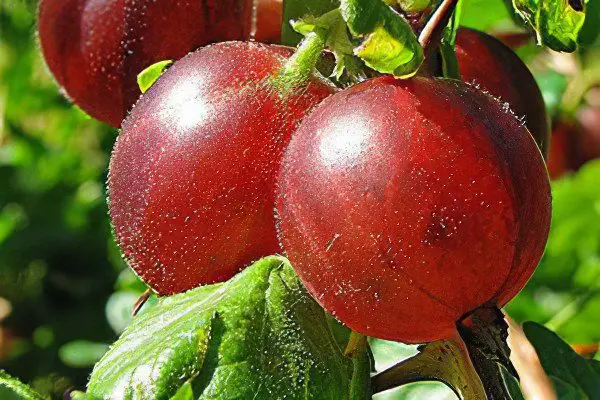
Variety Ravolt. This plant is highly resistant to frost. The harvest from one bush is plentiful, although the berries are not large, their average weight reaches 5 g. The color of the fruit is dark red, the pulp is sweet and juicy. They can be consumed raw, or processed for the winter. Variety Ravolt feels great in central Russia.
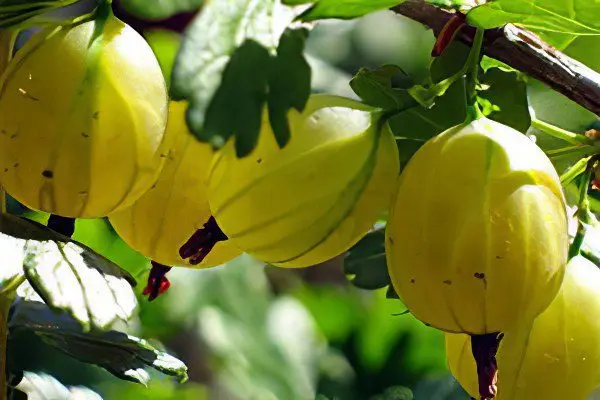

Variety English yellow. This is a compact, compressed plant, characterized by an upright growth.
The bush gives medium-sized oval-shaped berries. The weight of one fruit is on average 4 g, although there are also larger berries, weighing up to 8 g. The fruits have a rich amber hue, taste very sweet and juicy. From one bush you can harvest a rich harvest, weighing up to 21 kg.
The plant is resistant to frost, but can be affected by a sphere library.
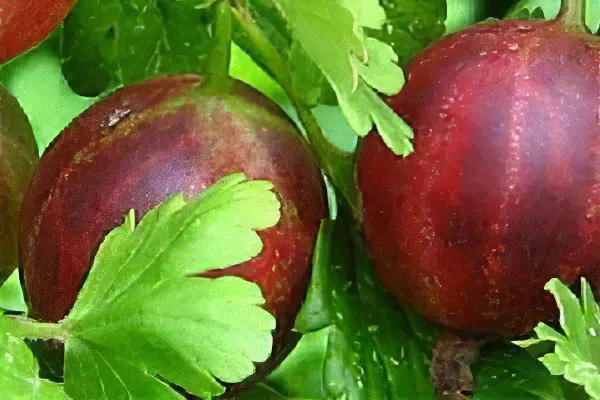
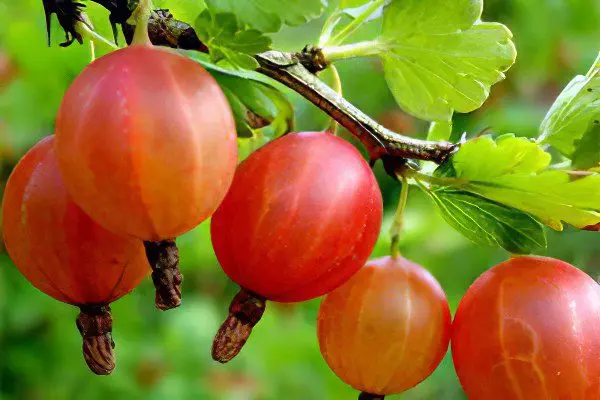
Variety Seedling Lefora. This gooseberry variety is very resistant to frost, so it is often chosen for planting in central Russia. From one bush you can collect up to 10 kg of fruit.
The plant itself is very strong, powerful and spreading, gives thick, but thin shoots dotted with thorns. Thorns are located mainly in the lower part of the branches.
The berries are small in size, have a reverse round-oval ovoid shape. The color of the fruit is purple-red, on top they are covered with a wax coating. The fluff on the fruit does not grow, the skin is thin, through which a strong aroma breaks through. Fruit tastes sweet. After full ripening, the berries remain on the bush for a long time and do not fall off.

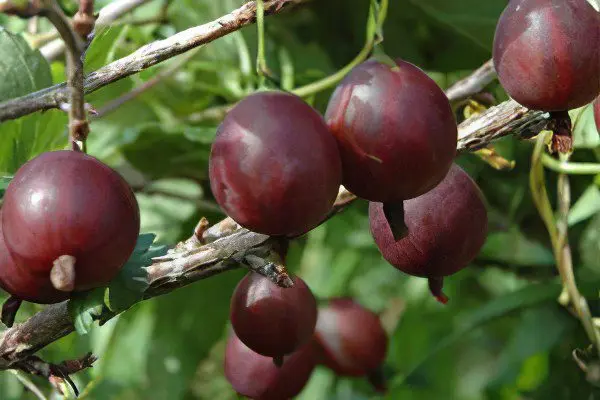
Variety Olavi. This variety is distinguished by the color of the berries. The fruits are dark cherry in color with light veins. The skin of the berries is thin and covered with a wax coating.
The taste of the berries is sweet and sour, have a slight aroma. They themselves are small in size from 2 to 4,4 g. The berries are located on a short stalk.
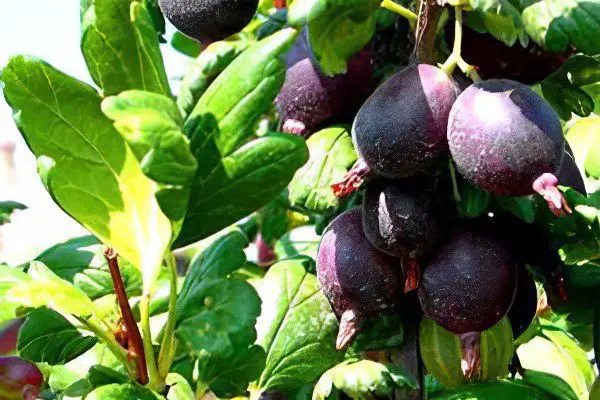
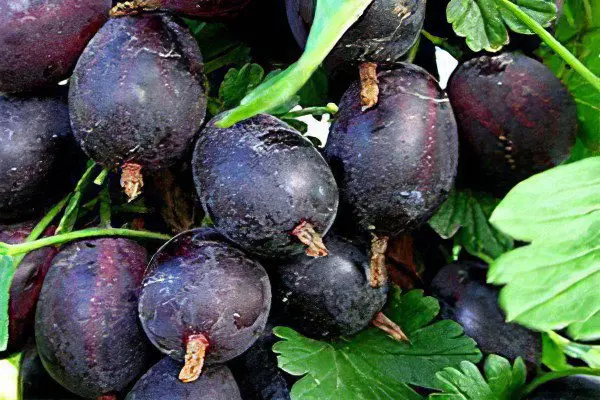
Variety Chernomor. The berries of this plant variety have a rich dark red color, small size. The weight of one fruit is on average 3 g. After full ripening, the berries become almost black. The skin on them is thick and strong, penetrated by light veins, which, as the fruit ripens, become almost invisible. The taste of the berries is sweet and sour. The yield from one bush is high.
The plant itself scatters the shoots weakly, but the crown of the bush is dense. Branches grow up. There are not many thorns on the shoots, they are single, have an average length. This variety is not afraid of powdery mildew and moth.
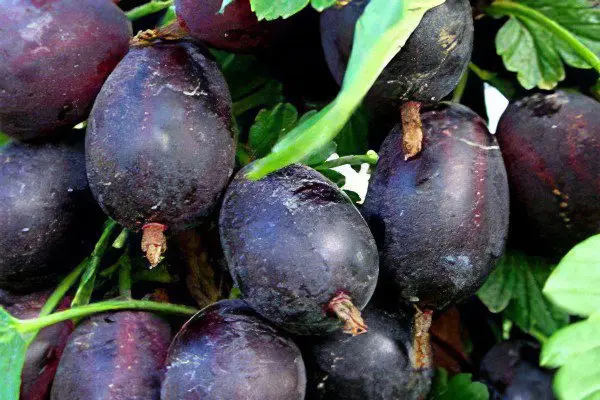
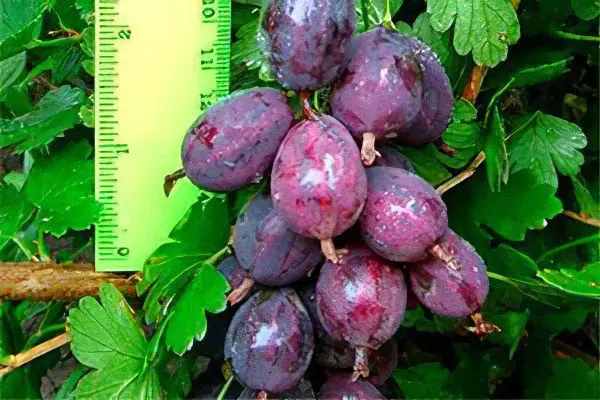
Grushenka variety. The fruits of this gooseberry variety ripen late, but at the same time they are quite large. The mass of one berry can reach 8 g. The shape of the fruit is pear-shaped, for which the plant got its name. The berries themselves have a sweet and sour taste, a strong aroma and a rich black color.
The bush reaches medium plants, gives spreading branches strewn with dense foliage. This variety is not afraid of powdery mildew, septoria and anthracnose. The yield of the plant is high, the fruits ripen early.
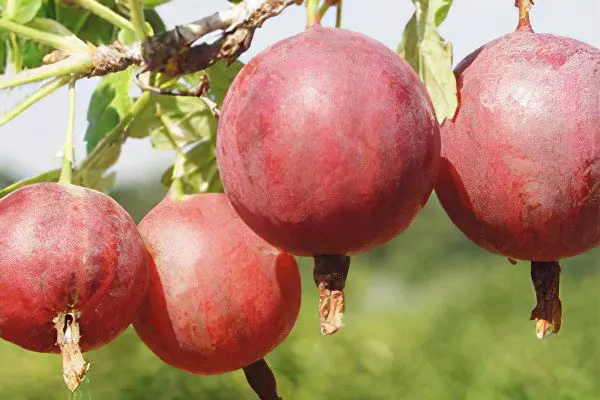
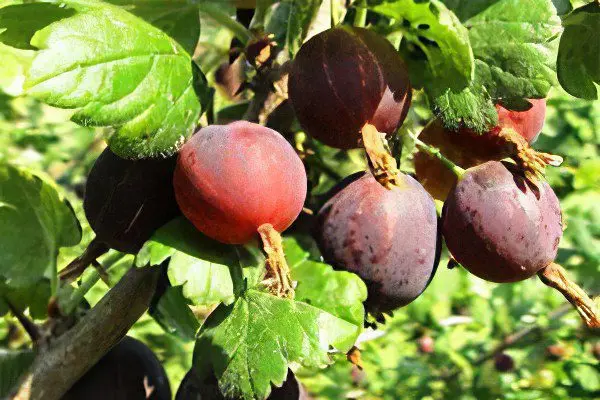
Variety Kolobok. This variety is characterized by early fruit ripening. During severe frosts, it can freeze slightly, but recovers very well and quickly. The plant is not afraid of powdery mildew and anthracnose.
From one bush you can collect up to 6 kg of berries. The fruits themselves are quite large, one berry can reach 8 g. The skin is covered with a thick waxy coating.
The bush gives thin multiple shoots, on which there are practically no thorns. They are rare and very weak. The Kolobok variety bears fruit more often on two-year-old branches.
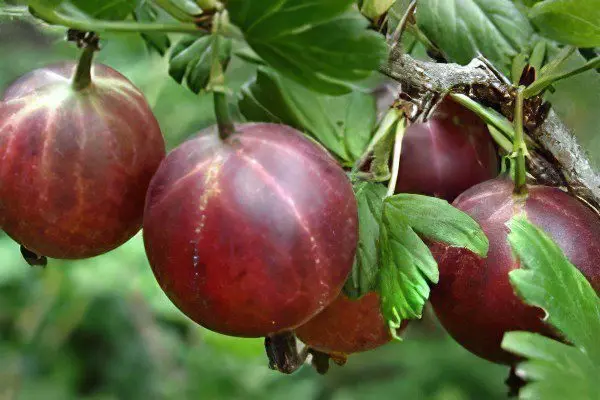
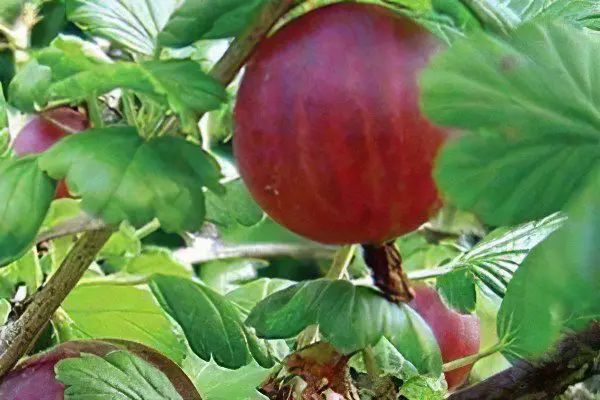
Variety Eaglet. This variety is characterized by early fruit ripening and good yield. From one bush you can collect up to 7 kg of berries. Berries are used as food coloring. Products to which they are added acquire a ruby color. The plant is not afraid of powdery mildew.
Varieties of thornless gooseberries for cultivation in central Russia
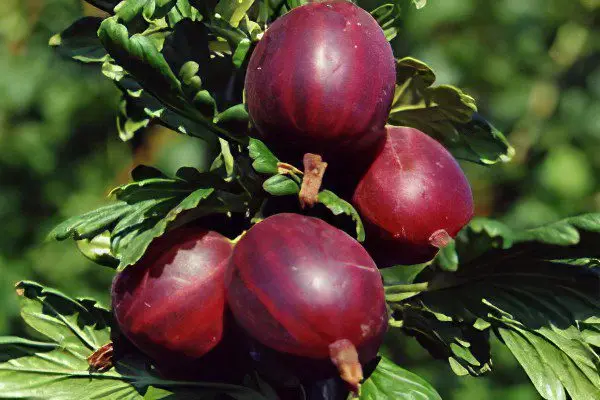
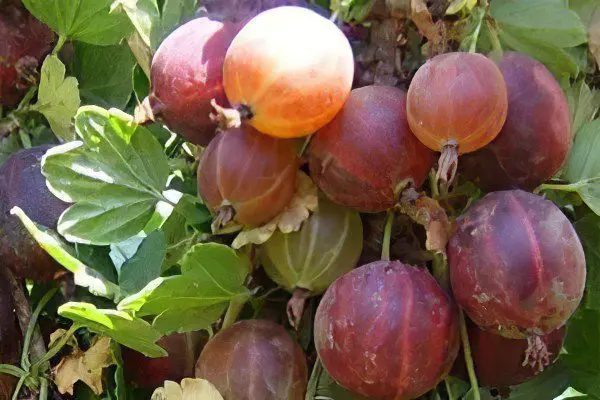
Grade Prunes. The fruits of this plant ripen early. The bush is resistant to frost, gives a high yield.
The berries are of medium size, the weight of one fruit reaches 4 g. The shape of the berries is oval, the color is dark red.
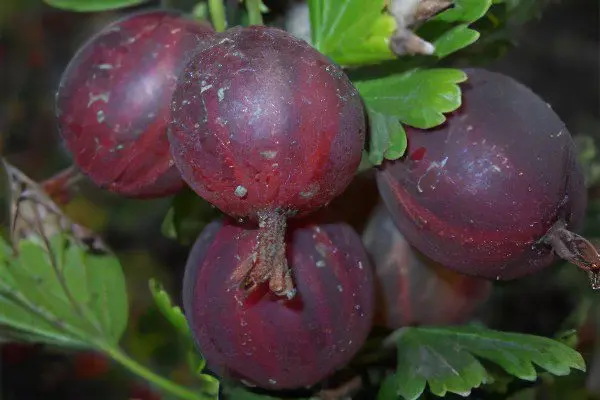
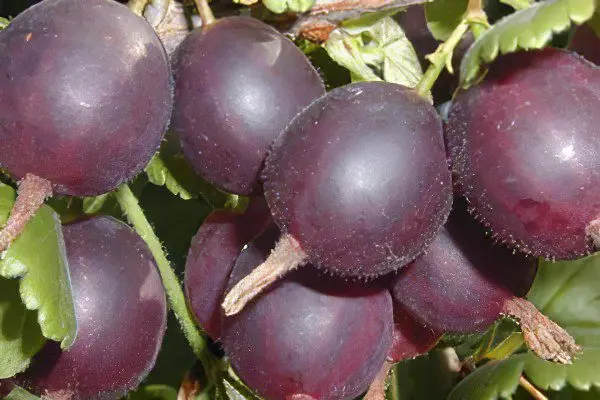
Grade Seedling of Prunes. The fruits of this plant ripen in medium terms. In this case, the branches do not have thorns at all. The berries reach large sizes, up to 9 g. When fully ripe, the fruits become almost black.
The bush tolerates frost well, is very resistant to pests and diseases. This variety is considered one of the best among the thornless gooseberry varieties.

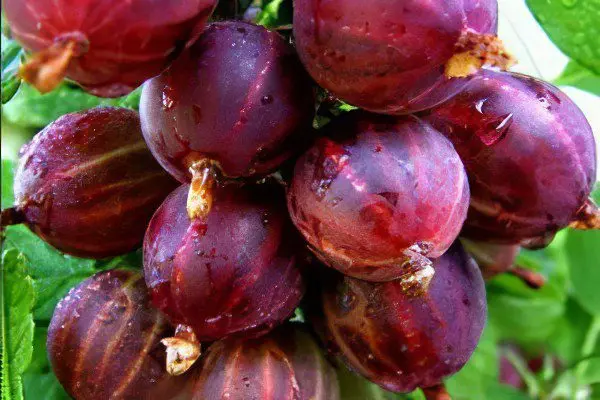
Sort Consul. This plant is represented by a strong, not very sprawling shrub. Medium-sized berries ripen on it, which reach 4,4 g in weight. The fruits have a dark red color, and when fully ripe they become almost black. The taste of the berries is sweet, covered with a thin skin. Harvest can be harvested in the second half of July.
The Consul variety tolerates frost and drought well, gives a bountiful harvest. There are practically no thorns on the branches. The plant is not afraid of powdery mildew.
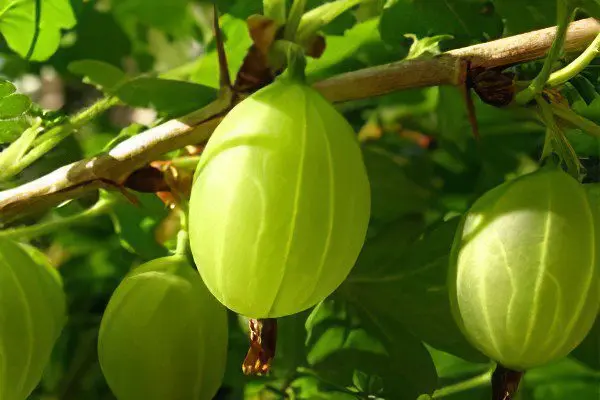
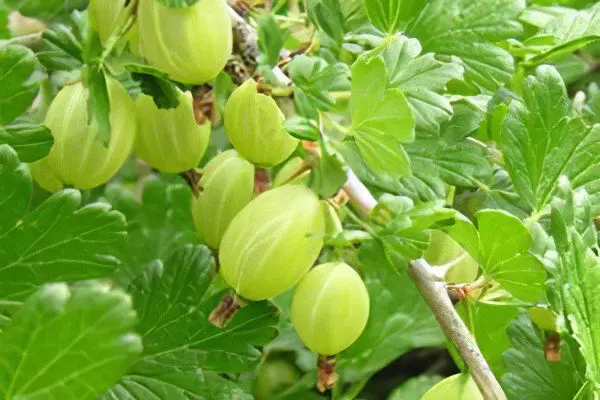
Grade Grossular. There are practically no thorns on the strong branches of this plant.
The fruits grow large, have the shape of an oval or drop. The color of the berries is light green, the skin is transparent, thin. A pleasant refreshing aroma emanates from the berries, and they taste slightly sour.
The Grossular variety is not afraid of frost and drought, therefore it is excellent for growing in the Moscow region. The plant is not afraid of powdery mildew. At the same time, it gives a good harvest. Berries can be processed and consumed fresh.
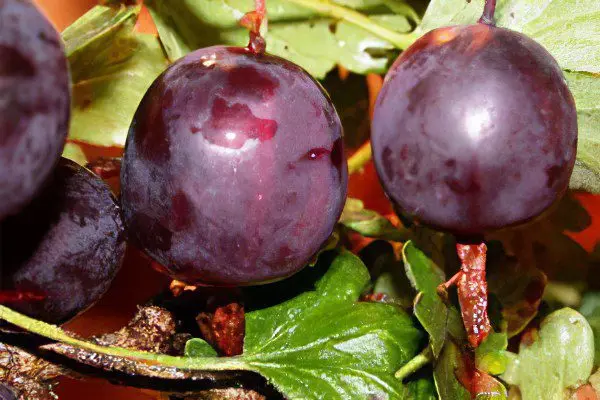
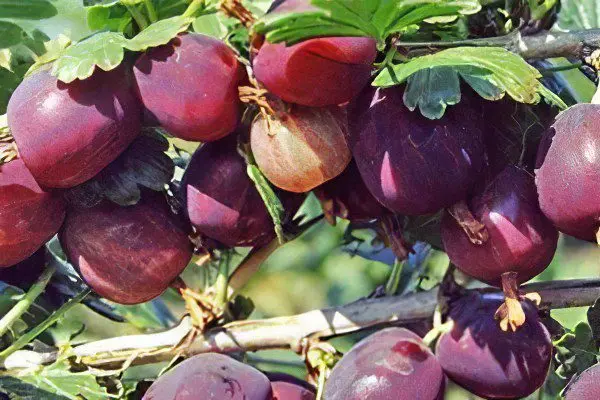
Variety Northern captain. It is a tall plant with dense branches. Thorns are formed in small numbers on young shoots. When the bush matures, the thorns almost completely disappear.
The berries do not reach large sizes, their average weight is 4 g. The color of the fruit is black, there is a slight wax coating on the skin. The shape of the berries is oval, the taste is sweet and sour. From one bush you can harvest a rich harvest, with a total weight of up to 12 kg. The plant is not afraid of powdery mildew.
Автор статьи: Кузьмин Алексей Александрович, эксперт-агроном, специально для сайта ayzdorov.ru









